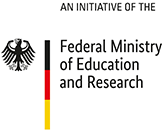Karlsruhe Institute of Technology (KIT)
Within these missions, KIT is operating along the three strategic fields of action of research, teaching, and innovation. This rather local integration already provides for a highly interdisciplinary approach to research. The over 22,000 students at 140 institutes of the KIT are explicitly called upon to be innovative and to enter "new terrain" – to quote the aptly titled latest KIT innovation report.
KIT is also superbly integrated and networked, both nationally and internationally. Together with 17 other major national research organizations, it forms the Helmholtz-Gemeinschaft – a network in which large-scale research equipment is used for everything from A for astrophysics to B for biology, C for cell research, and so on. Along with prominent guest scientists from all over the world, it is currently involved in 22 research networks worldwide. This guarantees an international orientation – and optimal links to the international science community.
Versatile and extensively integrated, KIT offers the ideal breeding ground for fresh and specifically green ideas for sustainability. A leading KIT institute in this regard was established in 2009: the KIT Climate and Environment Centre. Here, more than 500 employees from around 30 KIT institutes work together across the disciplines, bundling fundamental knowledge, technologies, and system analyses to develop practical solutions for dealing with natural and environmental risks.






